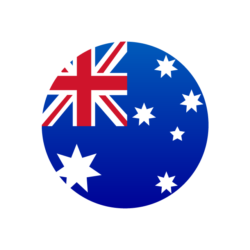
Until 1880, about 300 works of fiction were published, mainly novels for reading on the road, devoted to life on the ranch, criminal topics and the search for criminals hiding in bushes. Before 1900, however, Australian literature produced at least three remarkable novels. This is Marcus Clarke’s novel, Convicted for Life (1874), which provides a stunning, true-to-life picture of life in a Tasmanian convict settlement; Rolf Baldrwood’s (T.E.Brown) novel Armed Robbery, the story of escaped criminals and settlers in the Australian outback, and Such Is Life (released as a separate book only in 1903), written by Joseph Fairphy, writing under the pseudonym Tom Collins. The latter novel presented a picture of rural life in Victoria.
Other prominent novelists of the first half of the 20th century – Henry Hendel Richardson (Ms. JG Robertson), author of The Luck of Richard Mahoney (1917–1929), a trilogy about the lives of immigrants; Catherine Susan Pritchard, whose 1929 novel Cunardo is a superb work on the relationship of an Aboriginal woman with a white man; Louis Stone, whose novel John (1911) is a moving depiction of slum life, and Patrick White, author of Happy Valley (1939), The Living and the Dead (1941), Thetina’s Story (1948), The Tree of Man (1955), Voss (1957) ), Chariot Riders (1961), Solid Mandala (1966), Eye of the Storm (1973), Fringed Leaves (1976) and The Twyborn Affair (1979). White was awarded the 1973 Nobel Prize for Literature. White’s subtle symbolic descriptions are deeply meaningful and sophisticated in technique; perhaps the most significant works of Australian fiction of the 20th century.
Over the past 30 years, there have been many great novels by Australian writers. Thomas Keneally, one of the most prolific authors, rose to fame with the novel Schindler’s Ark (1982), which was the basis of the famous Hollywood film Schindler’s List. Kenilli’s other works are Bring Larks and Heroes (1967), Jimmy Blacksmith’s Song (1972), Dzeko (1993) and City by the River (1995). Elizabeth Jolly has published 13 novels, of which the most famous are The Mystery of Mr. Scobie (1983), The Well (1986), My Father’s Moon (1989) and George’s Wife (1993). Tea Astley has won the prestigious Miles Franklin Prize three times for The Well Dressed Explorer (1962), The Slow Natives (1965) and Servant Boy (1972), and Jessica Anderson has twice won the award for Tyrr-Learr by the River (1978) and Parodists. (1980). Peter Carey won the Booker Prize for the Oscar and Lucinda novel, which was published in 1985 in Illiwalker; his other works are Bliss (1981) and Jack Maggs (1997). David Maloof is a laureate of many literary awards, incl. 1994 Booker Prize for the novel Remembering Babylon; other famous works by this author are Fictional Life (1978), Fly Away, Peter (1982) and Conversations by the Carley Creek (1996). Tim Winton’s novels are often set on the coast of Western Australia: The Swimmer (1981), The Shoals (1984), Cloud Street (1991) and The Horsemen (1994). Murray Bale has written three good novels: Nostalgia (1980), Holden’s Act (1987), and Eucalyptus (1998).



